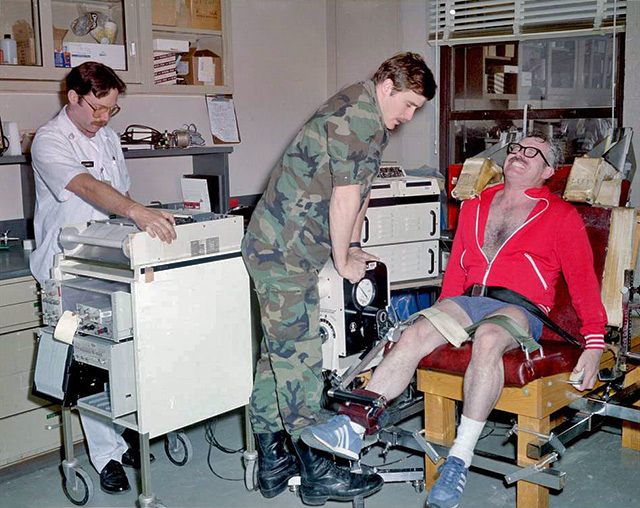Isokinetic Strength Tests involve isokinetic exercise, meaning at a constant speed. Movements are performed with a specialized apparatus which provides variable resistance so that no matter how much effort is exerted, the movement is conducted at a constant speed.
equipment required: Isokinetic testing equipment (e.g. Biodex, Cybex)
pre-test: Explain the test procedures to the subject. Perform screening of health risks and obtain informed consent. Prepare forms and record basic information such as age, height, body weight, gender and test conditions. Check and calibrate the equipment if required. See more details of pre-test procedures.
procedure: The subject is positioned so that the body movement to be measured is isolated. The equipment is then set at different speeds and the force applied can be measured throughout the range of movement.
 Cybex machine testing
Cybex machine testing results: The results are often reported at different speeds so that a speed/strength/power relationship can be seen. Comparison of the relative strengths of the different sides of the body, or agonists versus antagonists (e.g. quads & hamstrings) can show specific muscular limitations.
advantages: nearly any joint action can be tested by the adjustment of the equipment.
disadvantages: The equipment required is bulky and expensive.
comments: these tests are often performed at universities as part of research projects, or as part of injury rehabilitation services.
Similar Tests
- Mid-Thigh Pull Test (IMTP) — an isometric leg strength test, the participant pulls against a static object
Related Pages
- Other strength tests


 Current Events
Current Events